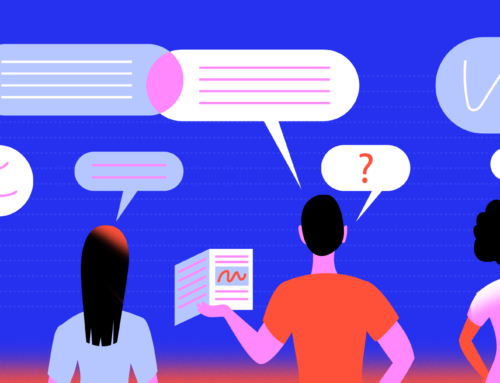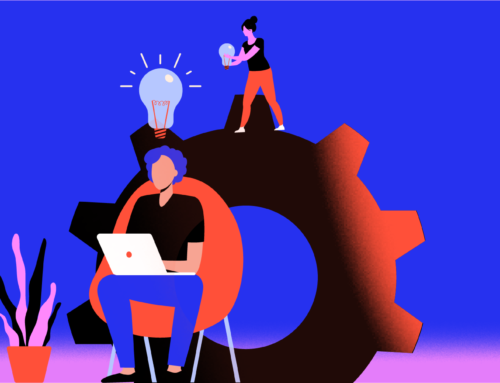Last Updated on February 1, 2022 – 6:45 am
You can’t go around the best way to teach employees and achieve true workforce transformation — experiential learning.
Today’s companies understand that navigating the learning landscape is more challenging than ever. So, organizations are desperately turning towards a proven way of getting employees up to speed while ensuring the learning is effective.
What is Experiential Learning?
Also known as “learning by doing,” experiential learning is learning through experience or taking part in the action. This type of learning involves the employees in the workplace challenges and day-to-day activities.
According to David Kolb’s Experiential Learning Theory, “experience” is the critical pillar for developing knowledge construction. This theory suggests that learning emerges from active participation and discovery. These two key components can be easily implemented in today’s modern workplace. We’ve written more extensively about it here.
While it does require taking employees through a real-life working environment, experiential learning allows leaders to create a set of experiences that take individuals through a simulation that mirrors a natural working environment.
How to Enable Learning by Doing at Your Company
One of the main things to do is consider the learning needs of employees to best meet their learning expectations.
The first step is making training so accessible that when employees need it, they can use it to solve problems right on the spot. So, it’s all about putting the people’s learning needs first instead of the organization’s. Here are a few methods to help you enable learning by doing:
-
Build an In-House Learning Experience
Experiential learning means taking employees through a program that mimics a real-life working environment. The environment can be the actual workplace or an ordinary classroom. The goal is to challenge participants to move beyond established work routines and into a learning zone.
Leaders may use guided discussions, role-playing workshops, or simulated situations. This enables participants to try new skills in a safe environment where they feel comfortable experimenting.
Get creative and use another team’s challenges as a case study. Real-life scenarios can serve as excellent events to discuss potential setbacks and ideal outcomes. It allows participants to think deeper and self-correct in the future based on conclusions they’ve drawn during the learning experience.
-
Get Specific
It’s essential to identify areas of improvement in each employee of your organization and use stretch assignments that go beyond their job descriptions.
If someone is struggling to enter a potential situation that leads to short-term conflict necessary to resolve an issue, work on their communication skills. Face them with frequent customer complaints and have them use emotional intelligence to solve conflict effectively.
If an employee struggles to take charge and more demanding responsibility, work on their leadership skills. Create a safe and open environment where they will be directly exposed to these roles and assign tasks that need to be executed independently while offering support.
-
Focus on Active Learning
What is active learning? How is it different from experiential learning?
The main difference is that active learning is learning by participating in activities, and experiential learning is learning by doing and seeing actual results.
Experiential learning is higher than active learning because it provides the best retention rates. Compared to passive learning, active learning is higher because it sticks.
Passive learning helps the employee to develop a surface-level understanding of a topic. Active learning equips the employee with the ability to carry out a task independently and without guidance. By doing this repeatedly, the employee develops subject matter expertise and quickly builds upon the learned skills.
According to a study by the University of Chicago, watching others perform skills without practicing them doesn’t lead to actual improvement. So, even if employees view instructional videos, their abilities won’t improve if they don’t get down to business and practice the skill.
So, placing them in a simulated environment that allows them to solve problems helps them transition into experiential learning quicker than passive learning.
-
Make it Part of the Company Culture
Make experiential learning commonplace. When employees know they can experiment with ways to solve a problem and feel there are no right or wrong ways to approach an issue, they will go beyond their traditional thinking to find a creative solution to the problem.
Communicate clearly and openly about the goals of the training experience. Assign a leader for each department to ensure employees are actively involved and engaged in the program. Finally, ask questions, gather feedback, and measure the success.
Conclusion
While it requires effort to implement, experiential learning is interactive and engaging. It allows employees to connect to the real-life working environment through challenging tasks and activities. This is the best approach to effectively prepare them to tackle the real world.
[/fusion_text][/fusion_builder_column][/fusion_builder_row][/fusion_builder_container]






Leave A Comment